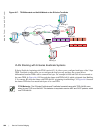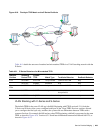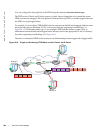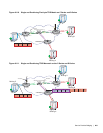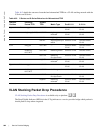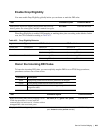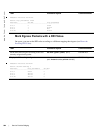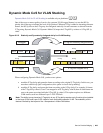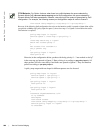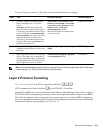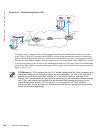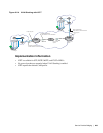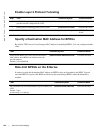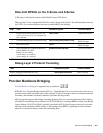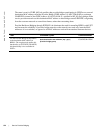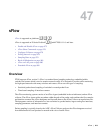
966 | Service Provider Bridging
www.dell.com | support.dell.com
FTOS Behavior: For Option A above, when there is a conflict between the queue selected by
Dynamic Mode CoS (vlan-stack dot1p-mapping) and a QoS configuration, the queue selected by
Dynamic Mode CoS takes precedence. However, rate policing for the queue is determined by QoS
configuration. For example, the following access-port configuration maps all traffic to Queue 0:
vlan-stack dot1p-mapping c-tag-dot1p 0-7 sp-tag-dot1p 1
However, if the following QoS configuration also exists on the interface, traffic is queued to Queue 0 but will be
rate policed at 40Mbps (qos-policy-input for queue 3) since class-map “a” of Queue 3 also matches the traffic.
This behavior is expected.
policy-map-input in layer2
service-queue 3 class-map a qos-policy 3
!
class-map match-any a layer2
match mac access-group a
!
mac access-list standard a
seq 5 permit any
!
qos-policy-input 3 layer2
rate-police 40
Likewise, in the configuration below, packets with dot1p priority 0 – 3 are marked as dot1p 7
in the outer tag and queued to Queue 3. Rate policing is according to
qos-policy-input 3. All
other packets will have outer dot1p 0 and hence are queued to Queue 1. They are therefore
policed according to
qos-policy-input 1.
A policy map output with rate shape for different queues can also be used.
policy-map-input in layer2
service-queue 1 qos-policy 1
service-queue 3 qos-policy 3
!
qos-policy-input 1 layer2
rate-police 10
!
qos-policy-input 3 layer2
rate-police 30
!
interface GigabitEthernet 0/21
no ip address
switchport
vlan-stack access
vlan-stack dot1p-mapping c-tag-dot1p 0-3 sp-tag-dot1p 7
service-policy input in layer2
no shutdown



